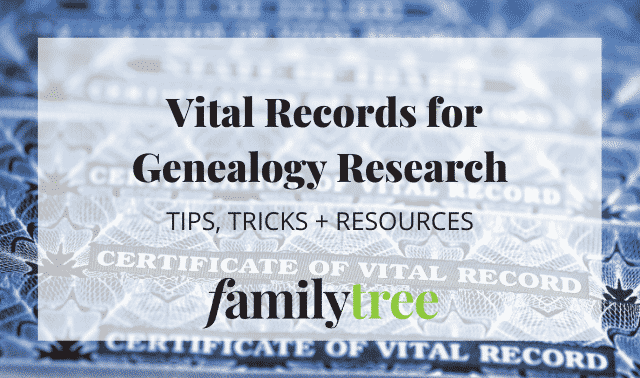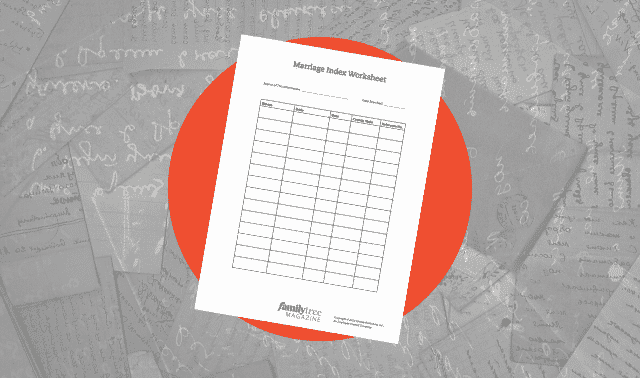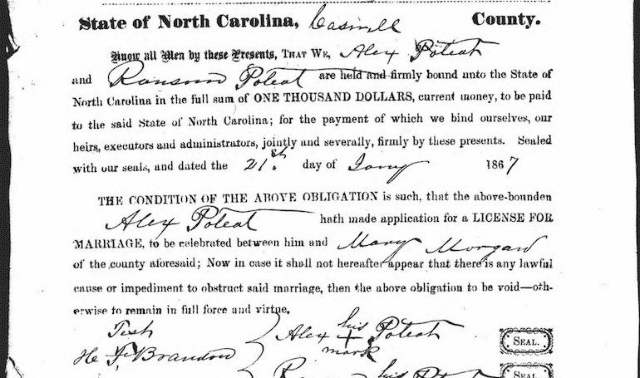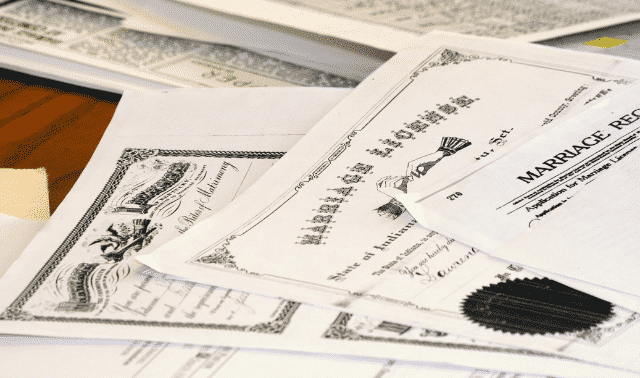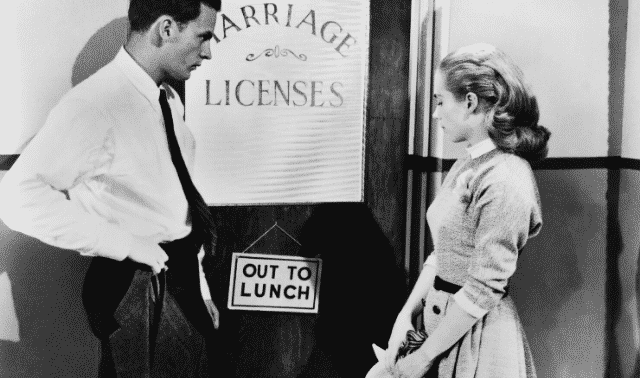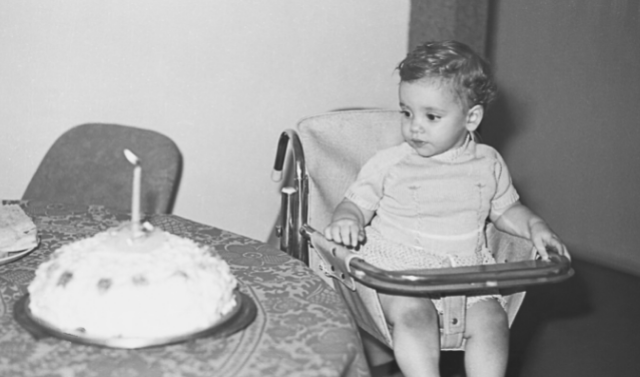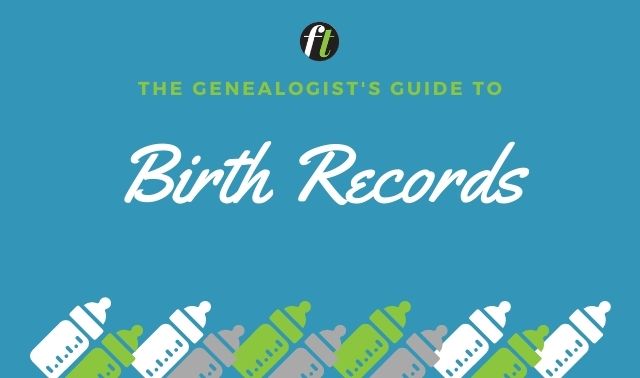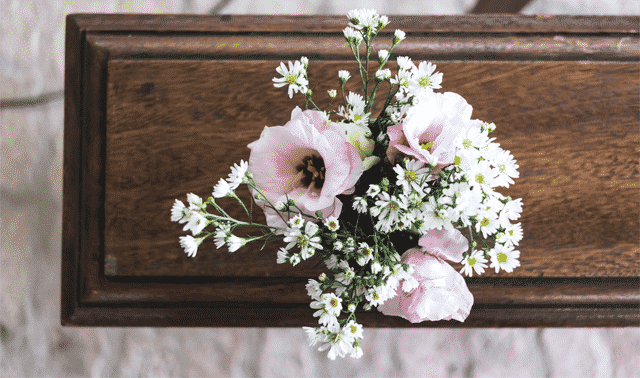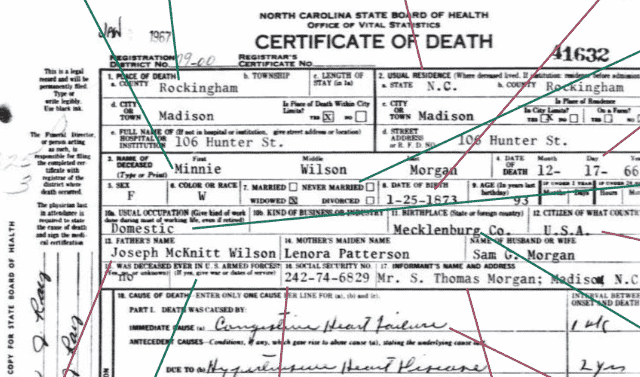Sign up for the Family Tree Newsletter Plus, you’ll receive our 10 Essential Genealogy Research Forms PDF as a special thank you!
Get Your Free Genealogy Forms
"*" indicates required fields

Jump to:
1. Annulment
2. Banns
3. Bond
4. Consent affidavit
5. Contract
6. Declaration of intention
7. Divorce petition and decree
8. Marriage license
9. Marriage return
10. Marriage certificate
11. Marriage register
12. Newspaper announcement
Related Reads
Marriage records encompass more than just a marriage certificate, which is lucky for you if your ancestors’ wedding happened before vital record-keeping began where they lived.
But even if your genealogy research has led you straight to that all-important marriage certificate, see if you can find these other records of your ancestors’ unions. You’ll confirm genealogical information and maybe even uncover new details:
1. Annulment
Legal or religious annulments are retroactive and declare the marriage invalid from the date of the marriage. Records are typically found in church or court records.
2. Banns
A church would announce three times a couple’s intent to marry, in case there were any objections to the couple marrying such as bigamy or another marriage intention.
3. Bond
In Southern states, the groom or male relatives of the bride posted a bond in a public place in the bride’s county, in case the marriage was nullified. The marriage generally followed within a few days.
4. Consent affidavit
A guardian would sign this document to grant permission for his ward to marry. Most common in the South and on the frontier, these documents are among town and county records.
5. Contract
An engagement was viewed as a legally binding business contract. Similar to the prenups of today, this protected the assets of the wealthy party. If either party broke the contract, he or she could be held in breach of contract and the matter settled in court.
6. Declaration of intention
A couple would file this document with a town clerk, who would post them in a public place in case someone had the right to contest the upcoming nuptials. Note that this doesn’t prove the marriage took place, only that the couple intended to marry.
7. Divorce petition and decree
The petition for divorce often includes depositions from family and friends, as well as the couple themselves. The court’s decree grants the divorce. Remember that a petition may have been filed even if a divorce wasn’t finalized.
8. Marriage license
A civil authority, such as a county court, issued a license to a betrothed couple. It can include their full names, place of residence, place of birth, age and whether it is the first marriage.
9. Marriage return
After the wedding, the officiant would fill out the marriage return and send it to the local registrar as proof the marriage occurred.
10. Marriage certificate
This document, given to the couple after the ceremony, records the names of the parties and other wedding details.
11. Marriage register
Towns or counties kept registers of civil and religious marriages reported to them.
12. Newspaper announcement
Check local papers for engagement, wedding and anniversary notices.
A version of this article appeared in the March/April 2012 issue of Family Tree Magazine.
Related Reads
ADVERTISEMENT

